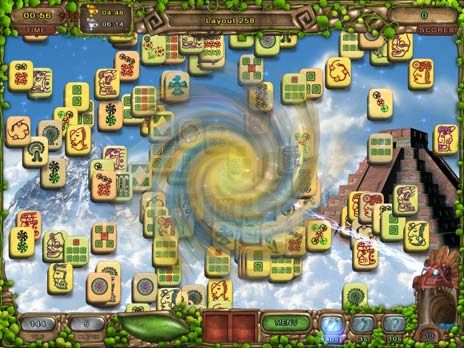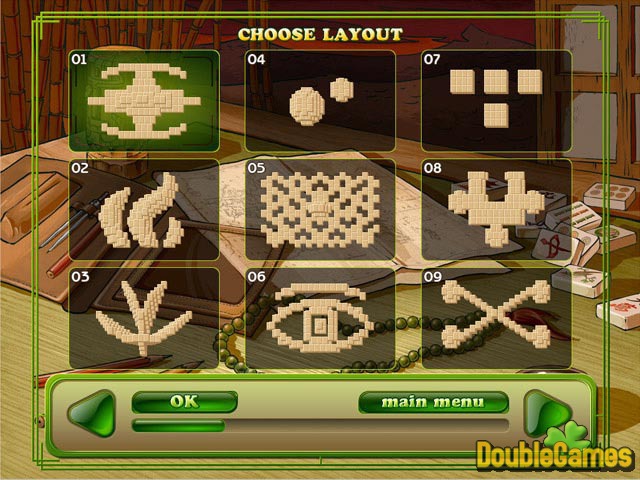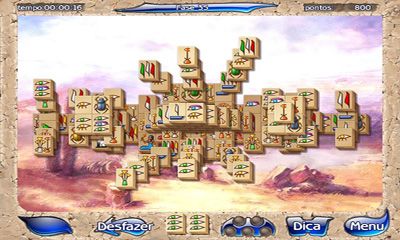
There are three pillars that inform ancient Chinese society – Confucianism, Taoism and Buddhism – and later, Legalism and Mohism, which informed the shape of society as far back as 1600 BC. With five different kinds of tiles that make this up, there are three suits: dots, bamboo and characters honour tiles engraved with the Chinese character for north, south, east, west and more and the beautiful bonus tiles decorated in three alternating colours and featuring illustrations of local foliage and pictorial visualisations of the four seasons.
#SHAPE GAMES MAHJONG ARTIFACTS FULL#
Ricky thinks back to the years spent mastering the craft, calling it “indeed a very boring learning process” consisting of endless repetition inscribing the 144 tiles that make a full set. He had moved to Hong Kong from Macau as a youngster, cutting his teeth at one of the largest mahjong retailers on the well-known Canton Road in Tsim Sha Tsui, steadily learning the trade which he would pass down to his son. Ricky’s father guided his hands throughout the informal apprenticeship. “I like to say that carving the tiles is done by hand and by heart,” he says, but really, when you take in the level of difficulty, much of the prowess comes down to patience and practice. He learnt to carve the characters without drafting their position first, an impressive feat considering each tile must be totally identical to the next. “It truly is a kind of calligraphy created by every master.”Īs his hands moulded to the feeling of tools pressing into the hard tiles, it was three years until Ricky became a professional. “It took a lot of effort and patience to make sure the tiles look beautiful,” he says. Once he was skilled in this, Ricky was accustomed to carving a stroke three to four times in order to create the right depth. No mean feat considering traditional tiles are made of sturdy bamboo, or the more controversial bone or ivory. Then, using a sharp tool, the craftsman creates a deep stroke at a sharp angle. Focusing on one stroke at a time, the first step in hand carving was to mark the position on the tile.

As a mahjong carver, it’s imperative all tiles are identical otherwise players can cheat using irregular tiles as markers. He started out his learning journey by practising on old tiles. Both his parents and brother worked in the factory while at home, the rooms were littered with mahjong-making tools. While most mahjong factories are now located on mainland China – where the game originated during the Qing dynasty – when Ricky was a child, the manufacturing process was a family affair. Using only five basic tools (these are also handmade), craftsmen free-handedly carve calligraphic characters in the ivory-white tiles which are then painted with delicate brush strokes and in perfect uniformity.įuk Hing Lung Mahjong Factory was one of the largest manufacturers of mahjong tiles before it closed in 2009. A dying art form thanks to industrial machinery, the hand carving of mahjong tiles is a skill dating back to the game’s beginnings in 19th Century China. Part of this celebration shone a light on the traditional craftsmanship of mahjong tiles. But along with the tirade of upset raising awareness on why cultural appropriation collectively damages diasporic communities, the outcry also saw an uptick in the appreciation of mahjong’s roots.
#SHAPE GAMES MAHJONG ARTIFACTS SERIES#
The Mahjong Line’s “modern makeover” – as described in its press release – was selling its series of westernised mahjong tiles for a whopping sum starting at $325 to $425 a far cry from the democratic reality of the game which is widely played by people of all backgrounds and ages.

As one person wrote: “You threw out thousands of years of culture to make a quick buck,” while another wrote, “My culture is not some cheap colouring book that can be filled in and be ‘made pretty’ by the standards of privileged teenyboppers.”

The Mahjong Line was called out across a global diaspora for its tone-deaf appropriation. Thousands of social media users took to various platforms to express their outrage at the whitewashing of a game which is generally understood as a central pillar of Chinese culture. The brand’s logo boasts a pretty-faced, rosy-cheeked East Asian woman, but beyond this exotic token (wink and all) the reinterpreted game appeared to have lost all traces of its Chinese heritage. Titled The Mahjong Line, the company founded by three white women quickly received widespread notoriety across social media, though not to its credit. At the beginning of 2021, a new Dallas-based mahjong company launched with intentions to “bring mahjong to the stylish masses” and “refresh” the centuries-old game.


 0 kommentar(er)
0 kommentar(er)
